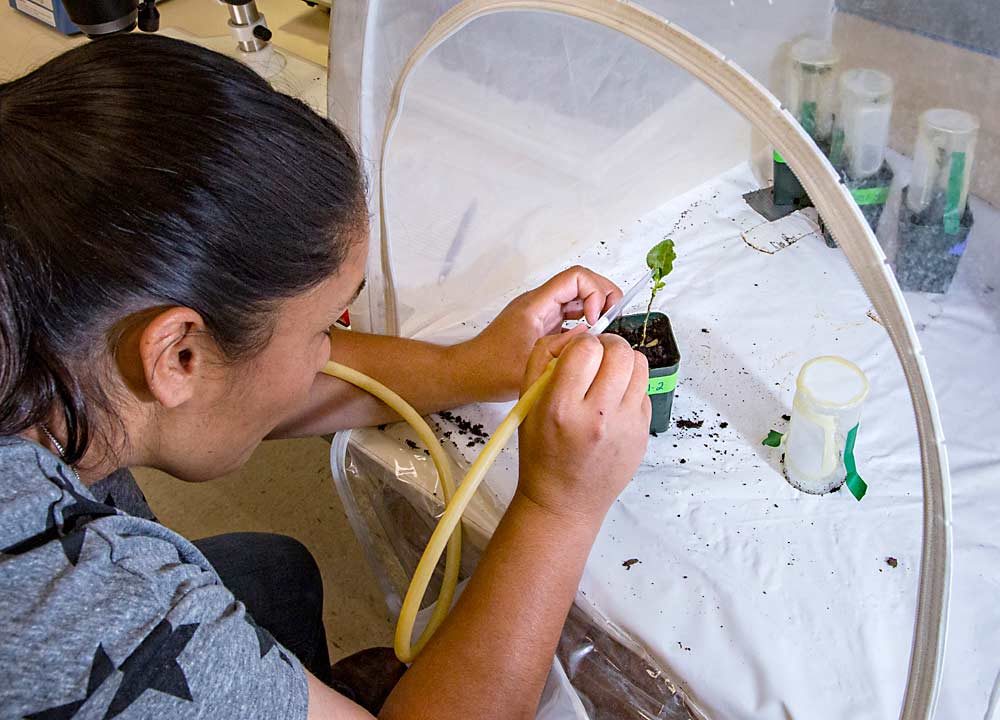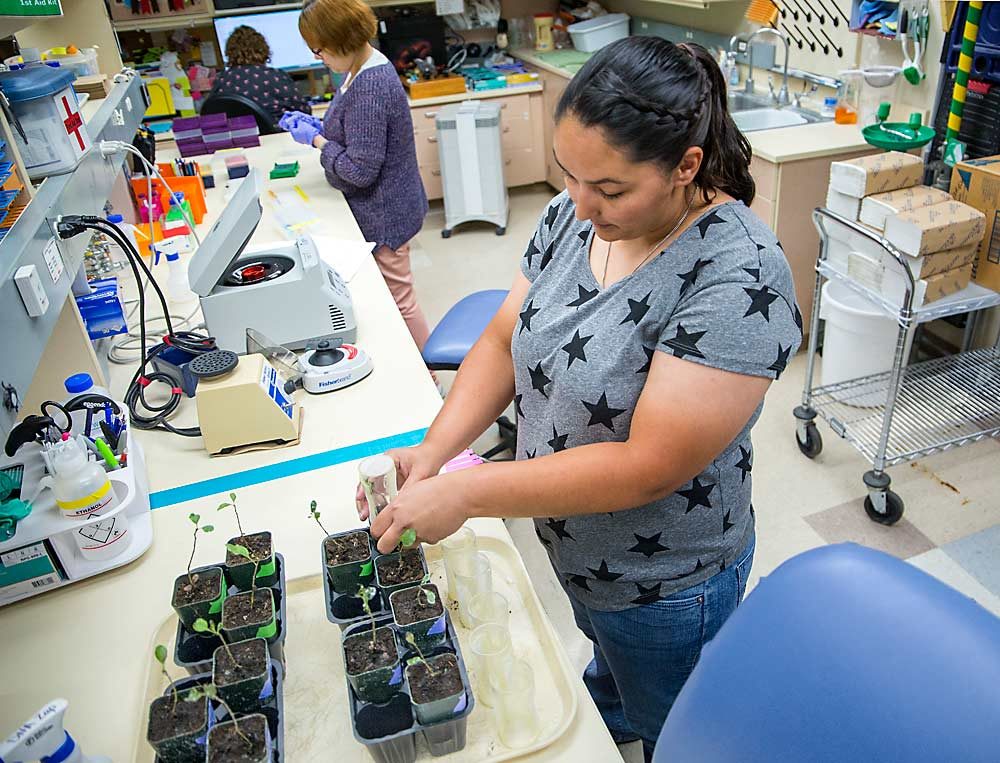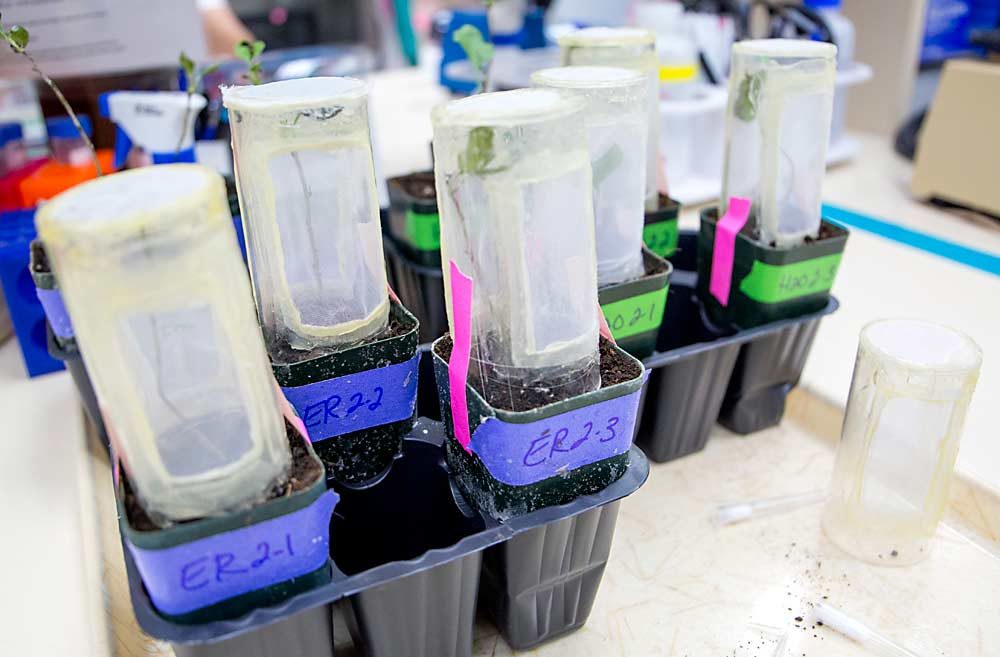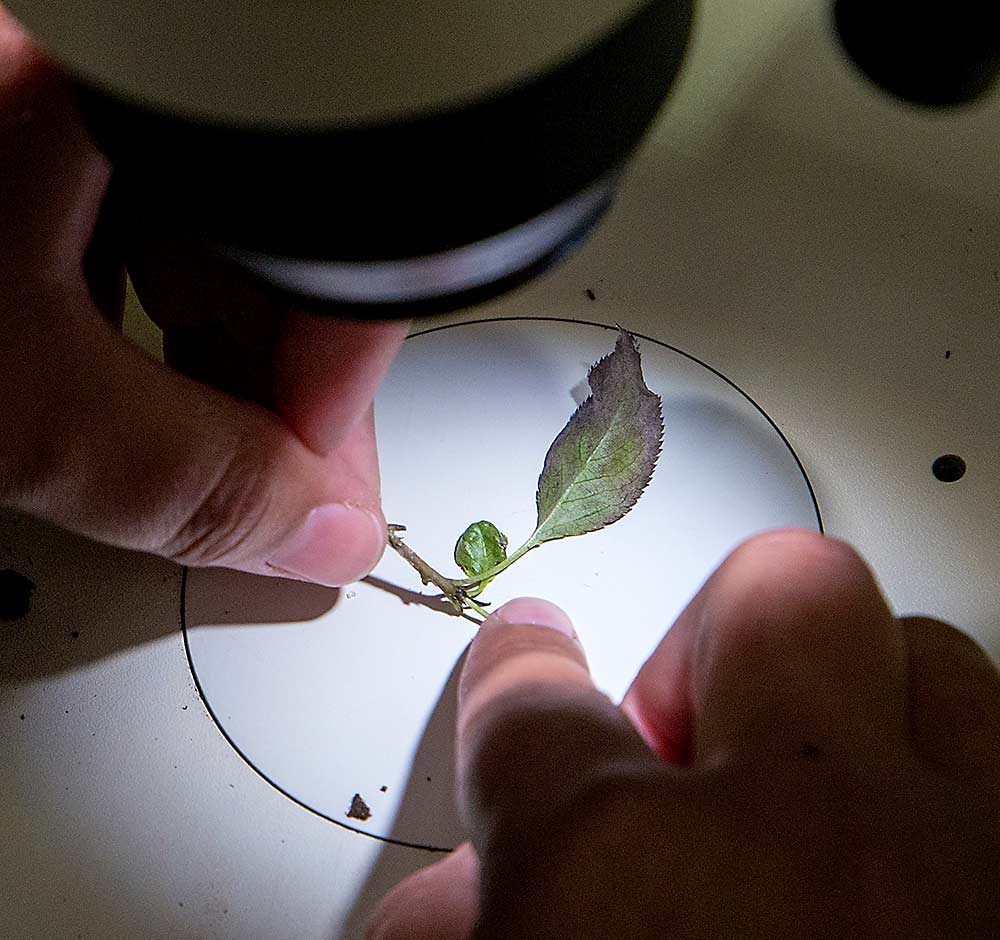
People may like erythritol. It sweetens coffee without the calories and meshes with an organic diet. It’s the main ingredient in the brand Truvia.
But pear psylla? Not so much. The sugar-alcohol alternative to sucrose is toxic to the dreaded pests. It kills them, keeps them away and sometimes even makes them act sort of drunk.
“It’s absolutely fascinating to watch,” said Rodney Cooper, a U.S. Department of Agriculture entomologist at the Agricultural Research Service facility in Wapato, Washington.

Based on laboratory and field research last fall and this spring, Cooper has concluded that erythritol can be used as an insecticide against pear psylla, one of the key pests of concern in the Northwest pear industry.
The idea has precedent. Despite being best known as an organic sugar substitute on grocery shelves, erythritol is already patented for use as an insecticide and shows up in many over-the-counter fruit fly traps. A 2017 study shows it works on spotted wing drosophila.
Cooper wanted to know if erythritol would work on arthropods, namely psylla, rust mites, spider mites and codling moth larvae, not to mention beneficial mites. The Fresh and Processed Pear Committee funded a one-year project for just under $20,000 to help him and his collaborators start to answer those questions.
So far, it appears to work on psylla. Here are a few highlights from his results:
—Nearly all psylla adults and nymphs died within three days when fed an artificial diet of 20 to 30 percent erythritol. About half of them died when the concentration was cut to 10 percent.
—About 70 percent of nymphs and adults died when confined to leaves dipped in erythritol, compared to fewer than 15 percent on control leaves.
—When given the choice, 75 percent of psylla preferred to lay eggs on leaves untreated with erythritol.
—Even a week after treating leaves, erythritol still caused “substantial mortality” in psylla.
—In test orchards near Moxee and Wenatchee, Washington, untreated pear trees averaged 23 psylla while treated trees averaged six — nearly a fourfold drop.

The results so far have convinced Cooper and his research assistant, Katie Wentz, that erythritol kills psylla that eat it, repels psylla from treated plants and has some residual effect over time.
Their research hit comic notes at times when watching the behavior of the psylla, which acted drunk, even after only 20 seconds of exposure. They stumbled when walking or climbing, acted lethargic and did not eat as much. They spun in circles and fell over on feeding plates.
“Their legs are just super splayed and their antennae are just going like crazy,” Wentz said. “They do all kinds of crazy stuff.”
The conclusions for the other arthropods are further away, said Betsy Beers, a Washington State University entomologist at the Tree Fruit Research and Extension Center in Wenatchee, who is collaborating with Cooper on the project.
Beers is studying erythritol’s effects on rust mites, spotted spider mites and predatory mites. Meanwhile, Cooper is continuing his own work with experiments exposing codling moth larvae to erythritol.

The drawback in erythritol comes in the application. The substance may be a common grocery store product, but it’s not something growers can just buy, mix in a tank and spray, which is how many orchardists use sugar to repel birds from cherries (see Sweet revenge for bird control). Erythritol must be dissolved in water with a heating process over a period of time.
Eventually, he hopes chemical companies pick up on the work and develop erythritol formulas for growers to fold into their IPM programs.
The emphasis up until now has been on fruit flies. “It’s going to be much more useful than that,” Cooper said. •
—by Ross Courtney






Please check my calculation, but 30% Erythritol by weight is about 500 lbs in 200 gallons of spray solution (for good coverage on mature pear trees). That seems like an insane amount of material to add to spray tank.